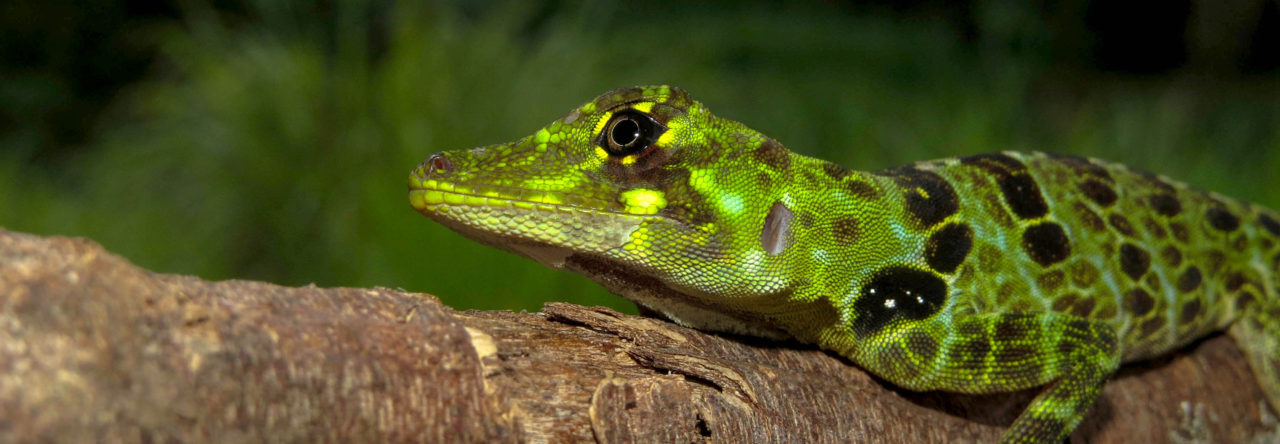
Dewlap and genetic differences between Anolis distichus and A. brevirostris at sites where they co-occur on Hispaniola.
Here at Anole Annals, we’re all familiar with the replicated evolution of different anole ecomorph types in the Greater Antilles. However, divergence into these different ecomorph classes is not enough to explain how the group became so speciose on these islands. Additional factors must therefore have promoted speciation throughout the history of the group.
One potential factor is the flashy anole dewlap. Dewlap diversification across anoles has led to the remarkable array of dewlap color, pattern and size we see today. If dewlap differences did indeed drive speciation in anoles, or are involved with the maintenance of species boundaries, we might expect that as differences in dewlap color and pattern increases between species, genetic differentiation will also increase through fewer hybridization events.
In our study that just came out in the Journal of Herpetology, Rich Glor, Anthony Geneva, Sabina Noll and I set out to test this using two widespread species from the Anolis distichus species complex, A. distichus and A. brevirostris. These two species co-occur in many locations on Hispaniola and, while they often differ in dewlap color where they do co-occur (yellow with an orange patch vs. all pale yellow), in other areas, they co-occur with similarly pale dewlaps. Using mitochondrial DNA, microsatellite and AFLP data, we investigated patterns of genetic differentiation at four sites: two where the species differ in dewlap color, one where the species share the same dewlap color, and another where pale dewlapped A. brevirostris co-occurs with two A. distichus subspecies (one with a similarly pale dewlap and the other with an orange dewlap).
In general, we found that A. distichus and A. brevirostris looked like “good species,” with strong genetic differentiation and little evidence of hybridization, even at a site where they share the same dewlap color. This suggests that dewlap color differences are not associated with genetic differentiation in a manner one might expect if dewlaps were involved in the speciation process or in maintaining species boundaries. However, at the site where A. brevirostris co-occurs with two A. distichus subspecies with both similar and dissimilar dewlap colors, we found some evidence of hybridization and the species were not as highly genetically differentiated. This discrepancy suggests that site-specific factors could be influencing the dewlap’s role in speciation or maintaining species boundaries. For example, as Leo Fleishman’s and Manuel Leal’s work has shown (e.g. 1, 2, 3), the dewlap’s effectiveness as a signal is dependent on the light environment. Further understanding about the environmental differences among our study sites, how species utilize the available light microhabitats within each site, and how the dewlap looks to anoles at each site could provide more insight into our findings.
On the other hand, perhaps we need to be looking beyond the dewlap and focusing instead on whole signaling displays. Anole behavioral displays can also be strikingly different among species (e.g. 1) and may instead be the key to understanding species diversification in Greater Antillean anoles.


























